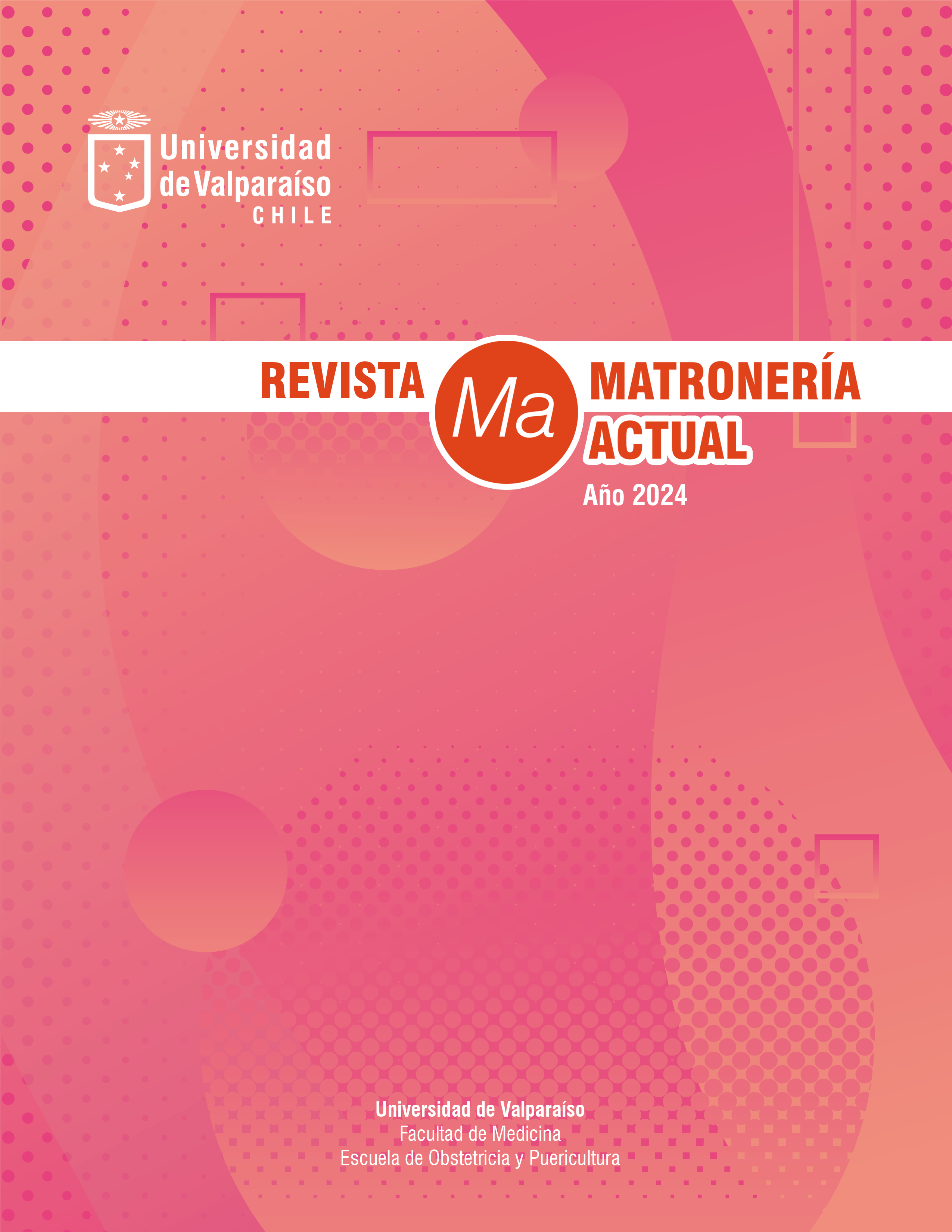HUMAN FERTILITY AND ASSISTED REPRODUCTION: CURRENT SCENARIOS FOR MIDDLESHIP
DOI:
https://doi.org/10.22370/revmat.1.2024.4011Keywords:
HUMAN REPRODUCTION, PROFESSIONAL ROLE, Fertility, MidwiferyAbstract
The great technological advances in assisted reproduction, although accompanied by great bioethical dilemmas, have facilitated the understanding of an area as complex as human fertility and reproduction; becoming a branch of Sexual and Reproductive Health (SRH) in constant development and growth; where midwifery has an opportunity to participate and respond to the demands of these users, since worldwide there are more and more couples who face difficulties in reproduction, as well as a greater number of users who wish to postpone their motherhood, with fertility preservation needs for medical reasons, or diverse families requiring fertility services.
In this context, this article is a reflection on the different scenarios where midwifery could act, as front-line professionals in the care of sexual and reproductive health problems, to address the needs and problems associated with reproduction; likewise, it is a call from the academy for the transformation of the curricula of the Schools of MIdwifery, to establish the interesting professional role that midwives can play within this field.
Downloads
References
Elevancini M.I., Díaz C., & Aliaga, C. (2021). Nuevos desafíos en el rol de matronas/matrones en Medicina Reproductiva. Revista Médica Clínica Las Condes, 32(2), 221-225. https://doi.org/10.1016/j.rmclc.2020.10.003
Hoffkling, A., Obedin-Maliver, J., & Sevelius, J. (2017). From erasure to opportunity: A qualitative study of the experiences of transgender men around pregnancy and recommendations for providers. BMC Pregnancy and Childbirth, 17(Suppl 2), 332. https://doi.org/10.1186/s12884-017-1491-5
López-Orta, V., & Garrido F.J. (2023). Papel de la matrona en la reproducción asistida. Aspectos psicológicos. Matronas hoy, 11(1), 32-38. https://aesmatronas.com/wp-content/uploads/2023/05/matronas_11_11.pdf
Ministerio de Salud de Chile. (s. f.). Código Sanitario. Modificación 2023. https://bcn.cl/2f8kr
Ministerio de Salud de Chile. (1997). Programa de salud de la mujer. https://www.minsal.cl/wp-content/uploads/2015/09/Programa-de-Salud-de-la-Mujer-1997.pdf
Ministerio de Salud de Chile. (2015). Normas nacionales sobre regulación de la fertilidad. https://www.minsal.cl/wp-content/uploads/2015/09/2018.01.30_NORMAS-REGULACION-DE-LA-FERTILIDAD.pdf
Neneman, M., Bączek, G., & Dmoch-Gajzlerska, E. (2019). The role of the midwife in the therapy of infertility in Poland in the opinion of patients. Pielęgniarstwo i Zdrowie Publiczne, 9 (1), 41–49. https://doi.org/10.17219/pzp/93531
Sánchez, J.P., Urdaneta, J.R., García, J., Sánchez, K., García, A., Baabel-Zambrano, N., Contreras, A., & Valbuena, G. (2018). Infección genital por Ureaplasma urealyticum en mujeres infértiles. Revista de Obstetricia y Ginecología de Venezuela,78(2), 132 – 141. http://saber.ucv.ve/ojs/index.php/rev_ogv/article/view/20479
Tsonis, O., Gkrozou, F., Siafaka, V., & Paschopoulos, M. (2019). The role of a midwife in assisted reproductive units. Clinical Obstetrics, Gynecology and Reproductive Medicine, 5, 1-4. https://doi.org/10.15761/COGRM.1000269
Vergara, C. (2020). Midwifery Hermeneutic. Historiographical Implications and Life Stories. En: Salavera, C., Teruel, P. y Antoñanzas, J. L. (eds.), Observatory for Research and Innovation in Social Sciences, 84. European Proceedings of Social and Behavioural Sciences, 4, 68-79. https://doi.org/10.15405/epsbs.2020.05.8
Warmelink, J.C., Adema, W., Pranger, A., & de Cock, T.P. (2016). Client perspectives of midwifery care in the transition from subfertility to parenthood: a qualitative study in the Netherlands. Journal of psychosomatic obstetrics and gynaecology, 37 (1): 12 - 20. https://doi.org/10.3109/0167482X.2015.1106474
World Health Organization. (2023). Infertility Prevalence Estimates, 1990–2021. Global report. 3 April 2023. Geneva: World Health Organization. https://www.who.int/publications/i/item/978920068315
Woroniecka, W., Neneman, M., & Sztyber, B.M. (2023). Consultations between midwives and couples affected by infertility using the Creighton Model as a diagnostic tool for health monitoring: a case report. Medical Science Pulse, 17(1), 55–63. https://doi.org/10.5604/01.3001.0053.4019
Published
Versions
- 2024-10-24 (2)
- 2024-07-09 (1)
How to Cite
License
Copyright (c) 2024 Contemporary Midwifery Journal

This work is licensed under a Creative Commons Attribution-NonCommercial-ShareAlike 4.0 International License.
__



.png) Indicaciones para Autores
Indicaciones para Autores









